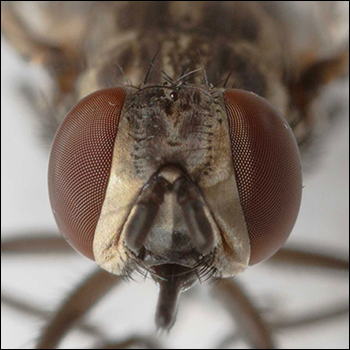
Grass Tetany and Milk Fever in Spring-calving Herds
Prevention and treatment options offered for both conditions.
As we are calving during the early spring with lush pastures, we can often find mature cows that are in otherwise good condition and health with unusual behaviors, unsteady gait or inability to rise. These are early signs of both grass tetany and milk fever. Both of these metabolic diseases are common in adult cows that have recently calved.
Grass tetany is a condition associated with inadequate magnesium in the diet. Magnesium is a mineral that is necessary in nerve function and, therefore, muscle contraction. Cattle with grass tetany become excitable, develop muscle tremors, have difficulty breathing and, in the worst case, die. As a result, care must be taken when handling and treating cattle that are exhibiting symptoms to avoid exacerbating the situation.
To assess the risk for grass tetany, forages may be tested for major mineral content (calcium, phosphorus, magnesium, potassium, sodium and sulfur) to calculate a “tetany ratio.” The ratio examines the quantity of potassium in relation to the quantity of magnesium and calcium, and ratios greater than 2:2 potassium to calcium/magnesium are likely to result in grass tetany.
Well-managed and -fertilized cool-season annual pastures put cows at the biggest risk, because rapidly growing pastures have increased uptake of potassium that blocks the uptake of magnesium by the plant. During this time, cattle become susceptible to grass tetany, associated with inadequate magnesium in the diet as excess potassium blocks both magnesium uptake by plants and magnesium absorption in the cow. Mature lactating cows are most susceptible because in addition to the fact dietary magnesium is being limited, these cattle are losing magnesium through the milk they produce.
Cattle diagnosed with grass tetany should be treated by slowly administering a calcium/magnesium solution intravenously, given additional magnesium subcutaneously, and removed from the susceptible pasture. The most common method of preventing grass tetany is to supplement the herd with magnesium beginning at least one month prior to spring grazing.
Mineral supplements that contain 10%-12% magnesium as magnesium oxide, called high-mag minerals in lay terms, are commonly used. At 3-4 ounce (oz.) of intake, such minerals will provide 40%-50% of a cow’s daily magnesium requirement. Mineral supplement intake is often reduced when higher rates of magnesium are added due to the unpalatability of magnesium oxide. Some producers will opt to blend higher rates of magnesium into their mineral and add cottonseed meal or a similar feedstuff to increase supplement palatability and magnesium consumption.
Milk fever, also called parturient paresis (parturition paralysis), is a common metabolic disease in dairy cows, but can be an issue in older mature beef cows. The disease is often associated with the start of lactation resulting in sudden onset of low blood calcium (hypocalcemia) with deficiency of calcium uptake from the diet and the inability of cows to mobilize bone calcium to maintain blood calcium levels. This paralysis usually occurs within 72 hours of calving.
Exposure to the very-high calcium content, as well as other minerals in high concentration, can cause the body to minimize absorption and focus on mineral storage. There are indications that milk fever can be associated with vitamin D deficiency because of its role in calcium metabolism. Near parturition, calcium needs for milk production increase greatly and with the exposure of high calcium in the diet, a cow’s body just isn’t prepared to absorb and mobilize stored calcium during this period.
Feeding diets that are high-phosphorus and low-calcium during late pregnancy helps prevent milk fever because metabolic mechanisms for bone calcium mobilization will be up and going prior to calving. Treatment for milk fever focuses on restoring serum calcium levels to the normal range, which must occur at the earliest possible time to avoid muscular and nervous system damage.
A veterinarian should be consulted for diagnosis and treatment. If deaths have occurred, your veterinarian should be consulted to properly establish cause of death. These diseases are hard to differentiate and difficult to treat in a timely manner, but for both, prevention is key.
Editor’s note: Paul Beck is a beef cattle nutrition specialist for Oklahoma State University Extension. This article is reprinted with permission from the March 22 Cow-Calf Corner newsletter. Photo by Kasey Brown.



